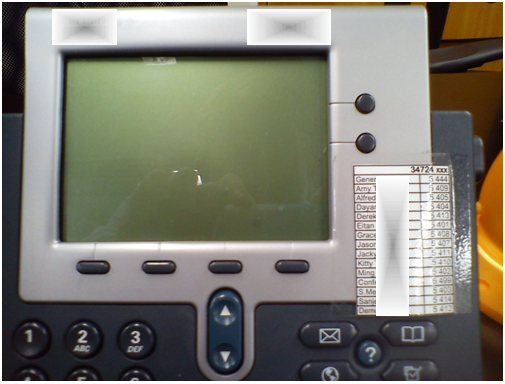Why Does Lync Beat the Competition?
We have won a lot of projects with customers who were considering some of our competitors’ products. I took a closer look at what makes Lync a better solution for these customers, and what I found was that customers believe Lync stands above its competition because of features that are easy to use and the interoperation with other Microsoft solutions. Unlike other “unified communications” companies that have acquired their way into providing a “solution,” Microsoft built Lync from the ground up to be a single platform that can enhance, extend, and replace traditional and IP PBX systems.
With Lync, customers get more than a voice solution. HarborOne (Read the case study), a credit union, considered but rejected a telephony solution based on Cisco technology. “We didn’t just want to replace traditional telephony with Internet telephony,” says Wayne Dunn, Senior Vice President and Chief Technology Officer at HarborOne. “We wanted a unified communications and collaboration solution. For us, true collaboration was the key. Cisco didn’t offer that; it offered Internet or voice over IP [VoIP] telephony.” The interoperability between Lync and Microsoft Exchange, the ability to view presence or start a chat session through Microsoft Outlook—those things sold HarborOne on Lync. “Internet telephony, by itself, doesn’t justify the cost of the investment because it doesn’t include collaboration—as the Microsoft solution does,” says Dunn.
The voice capabilities in Lync are enhanced by features that make the whole system easier to use. Have you ever had to stick a list of your frequent contacts to your phone because it was too difficult to program them into the phone? If you have used a popular product from one of our competitors, the picture below may look familiar. Contrast this with Lync: all you have to do is right-click on any contact or email address in Lync or Outlook, and then select the option to add the person to your frequent contacts list.

Actual picture of a phone sent by a customer who recently switched to Lync.
We had to blur out the customer names on this picture to protect our customer’s personally identifiable information.
When EDB (read the case study), an IT Services organization headquartered in Norway, was looking for its next-generation communications solution it investigated options from IBM and Cisco. It found that those companies lacked the comprehensive solution that Microsoft Lync Server 2010 provides. “They can provide some of the same capabilities, like instant messaging and online meetings, but they are not all in the same application and they don’t work well with other solutions on the desktop,” explains Magnus Mühlenbock an IT Manager at EDB. “With Lync, all of the capabilities are available in one client.” Even though you might get the capabilities in some form, Microsoft pulls them together in a way that’s easy for users.
I’ve also talked in past blogs about the Colombia National Police (read the blog here) and AT Kearney (read the blog here). These two organizations chose Lync instead of deploying or continuing to invest in Cisco solutions, which helped them save money and gave them additional capabilities. With Lync, companies can provide employees with collaborative tools that make work easier and are available anywhere, anytime, and they can also offer IT departments a simple solution to deploy and manage.
Stories like these make me confident that Lync Server 2010 is the best communications solution on the market today. Microsoft Lync helps you to communicate with the right people easily, efficiently, and effectively within the business applications you use each day.
Kind regards,
Rainer Podjoutomo
Product Manager, Microsoft Lync